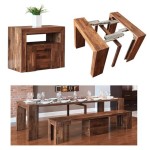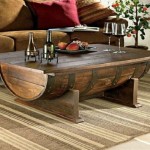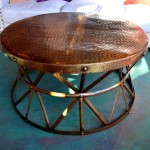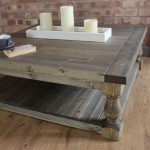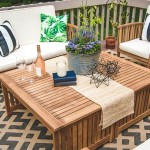How To Refinish A Dining Table With Chalk Paint
Refinishing a dining table can breathe new life into a central piece of furniture and transform the aesthetic of an entire dining space. Chalk paint, known for its matte finish, ease of application, and versatility, offers a practical option for achieving a refinished look with minimal preparation. This guide provides a comprehensive overview of how to refinish a dining table using chalk paint, outlining each step of the process, from preparation to sealing.
Before commencing the refinishing project, it is crucial to gather the necessary materials. The required supplies include: chalk paint in the desired color; chalk paint wax or a suitable sealant; paintbrushes (a high-quality brush designed for smooth application is recommended); painter's tape; drop cloths; sandpaper (various grits, such as 120, 220, and potentially coarser grits if dealing with a heavily varnished or damaged surface); a sanding block or orbital sander; a tack cloth; a wax brush or lint-free cloths; mineral spirits or a degreaser (for cleaning); and protective eyewear and gloves.
Preparation: Cleaning and Sanding
Proper preparation is essential for achieving a durable and attractive finish with chalk paint. The initial step involves thoroughly cleaning the dining table. This entails removing any existing dirt, grease, or wax buildup that may impede the paint's adhesion. Use a mild detergent diluted in water or a specialized degreaser product to clean the entire surface. Pay particular attention to areas that are frequently touched or exposed to spills.
After cleaning, allow the table to dry completely. Once dry, inspect the surface for any imperfections such as loose veneer, chips, or scratches. Address these issues before proceeding to the sanding stage. For minor imperfections, wood filler can be used. Apply the filler according to the manufacturer's instructions, allow it to dry thoroughly, and then sand it smooth.
Sanding is a critical step in preparing the table for chalk paint. While chalk paint is often touted for requiring minimal prep, sanding ensures proper adhesion and a smoother final finish. Begin by using a medium-grit sandpaper (e.g., 120 grit) to lightly scuff the existing finish. Focus on removing any gloss or shine from the surface. For tables with a particularly glossy or heavily varnished finish, a coarser grit may be necessary initially.
After the initial sanding, switch to a finer-grit sandpaper (e.g., 220 grit) to smooth out any scratches created by the coarser grit. Ensure that the sanding is even across the entire surface. A sanding block or orbital sander can be used to expedite the process, particularly on larger table surfaces. When sanding, work with the grain of the wood whenever possible to avoid creating unsightly scratches.
Once the sanding is complete, thoroughly remove all sanding dust. This can be accomplished using a vacuum cleaner with a brush attachment, followed by wiping the surface with a tack cloth. A tack cloth is a sticky cloth designed to pick up fine dust particles, leaving a clean surface for painting. Ensure that all nooks and crannies are free of dust before proceeding.
If there are areas of the table that you do not want to paint, such as metal legs or decorative elements, protect them with painter's tape. Apply the tape carefully, ensuring that it adheres tightly to the surface to prevent paint from bleeding underneath.
Application of Chalk Paint
With the table properly prepared, the next step is to apply the chalk paint. Before opening the can of chalk paint, stir it thoroughly to ensure even distribution of the pigment. Avoid shaking the can, as this can create air bubbles that may affect the finish.
Apply the first coat of chalk paint using a high-quality paintbrush. Work in smooth, even strokes, following the grain of the wood whenever possible. Avoid applying the paint too thickly, as this can lead to drips and uneven drying. Instead, aim for a thin, consistent coat that provides adequate coverage.
Allow the first coat of chalk paint to dry completely according to the manufacturer's instructions. Drying times can vary depending on the brand of chalk paint and the ambient temperature and humidity. Typically, chalk paint will dry to the touch within an hour or two, but it is best to allow at least 24 hours for complete drying before proceeding to the next step.
Once the first coat is dry, inspect the surface for any imperfections or areas that require additional coverage. Apply a second coat of chalk paint in the same manner as the first. Again, use thin, even strokes and allow the paint to dry thoroughly.
Depending on the desired look and the color of the chalk paint, a third coat may be necessary to achieve full coverage and a uniform finish. If a third coat is required, apply it in the same manner as the previous coats, ensuring that each coat is completely dry before applying the next.
For a distressed or aged look, the chalk paint can be sanded lightly after it has dried. Use a fine-grit sandpaper (e.g., 220 grit) to gently sand the edges, corners, and any raised areas of the table. This will reveal the underlying wood or previous layers of paint, creating a worn and weathered appearance. Control the pressure and sanding time to achieve the desired level of distressing.
Sealing and Protection
After the chalk paint has dried and any desired distressing has been completed, it is essential to seal the surface to protect the paint and provide a durable finish. Chalk paint is porous and susceptible to stains and damage if left unsealed.
The most common sealant for chalk paint is chalk paint wax. Chalk paint wax is a soft, pliable wax that is applied to the painted surface to create a protective layer. Apply the wax using a wax brush or a lint-free cloth. Work in small sections, applying a thin, even layer of wax. Allow the wax to sit for a few minutes before buffing it with a clean, lint-free cloth. Buffing the wax will remove any excess and create a smooth, lustrous finish.
Alternatively, a water-based polyurethane sealant can be used instead of wax. Polyurethane sealants offer greater durability and resistance to stains and scratches, making them a suitable option for dining tables that will be subjected to heavy use. Apply the polyurethane sealant according to the manufacturer's instructions, using a brush or a sprayer. Multiple coats may be necessary to achieve adequate protection. Allow each coat to dry completely before applying the next.
Regardless of the sealant used, ensure that it is applied evenly and thoroughly to all painted surfaces, including edges and corners. Allow the sealant to cure completely before using the dining table. Curing times can vary depending on the type of sealant used, so consult the manufacturer's instructions for specific recommendations.
Once the sealant has cured, the refinished dining table is ready for use. Avoid placing hot items directly on the surface, and use coasters and placemats to protect the finish from spills and scratches. Clean the table regularly with a damp cloth and a mild detergent. Avoid using harsh cleaning chemicals or abrasive cleaners, as these can damage the finish.
Refinishing a dining table with chalk paint is a rewarding project that can transform the look of a dining space. By following these steps, a homeowner can achieve a beautiful and durable finish that will last for years to come.

How To Chalk Paint A Table Top Last
Gorgeous Chalk Paint Dining Table Makeover Diy Kindly Unspoken

Chalk Paint Table Makeover

Farm House Table Makeover With Gel Stain And Chalk Paint

How To Chalk Paint A Table And Chairs Confessions Of Serial Do It Yourselfer

A Kitchen Table That Pops Happiness Is Creating

Refinishing A Dining Table Diy Beautify Creating Beauty At Home

How To Chalk Paint A Table And Chairs Confessions Of Serial Do It Yourselfer

Dining Table Makeover Don T Buy New Furniture Prettydistressed

Top Coat Protection Options For Chalky Painted Furniture Diy Beautify Creating Beauty At Home
Related Posts


